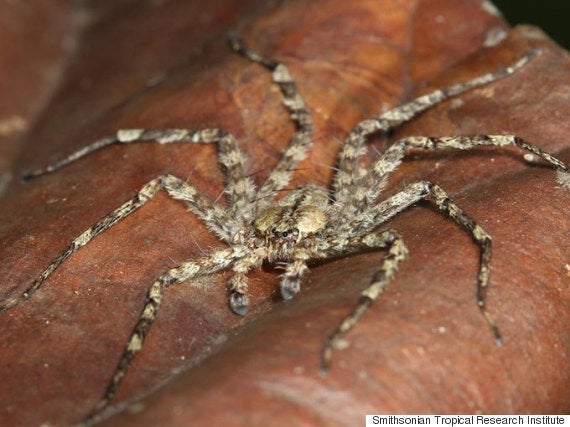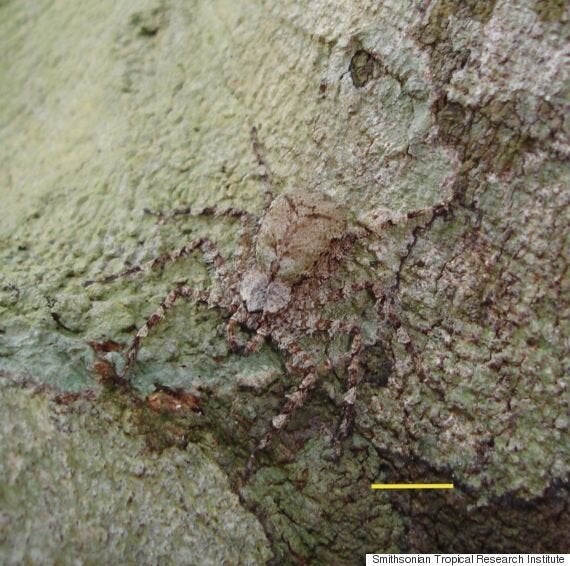If you are scared of spiders, look away now.

Scientists have discovered that spiders, belonging to the genus Selenops, are experts at navigating their way through the air.
Instead of falling to the ground like a rock, they are able to steer themselves from tree trunk to tree trunk in the same way that BASE-jumpers do.
Researchers from University of California, Berkeley, the University of Louisville and the Smithsonian Tropical Research Institute discovered this hidden talent after throwing spiders off treetops in South America.
The only other non-flying insects that it shares this feature with are ants, bristletails and some insect larvae.

Selenops banks camouflaged on a tree trunk
"My guess is that many animals living in the trees are good at aerial gliding, from snakes and lizards to ants and now spiders," explained Robert Dudley, a professor of integrative biology at the University of California, Berkeley.
"If a predator comes along, it frees the animal to jump if it has a time-tested way of gliding to the nearest tree rather than landing in the understory or in a stream."
The experiments took place in Panama and Peru where biologists drop 59 spiders from a height of between 65 and 80 feet and found that 93% were able to control their landing with great precision.
SEE ALSO:
- Scientists Are Actually Creating Super-Spiders By Spraying Them With Graphene
- Base Jumpers Land In Rooftop Pool Party In Kuala Lumpur
- BASE Jumper Survives Crashing Into Cliff
- World Trade Centre Base-Jump Video: These Guys Were Arrested But At Least We Get To See This Incredible Video
- Base Jumper Leaps Into Fog Void In Terrifying Video
One of the main ways they were able to do this is by spreading their legs wide and using lift and drag to steer themselves to the ground, Dudley explained in a statement from Smithsonian Tropical Research Institute.
He also noted that the spiders were able to turn themselves the right way round in mid-air if they were dropped front-down.
While the discovery is a terrifying thought for most of us, biologists are keen to find out how the spiders are able to execute their incredible BASE-jumping skills.
"This study, like the first report of gliding ants, raises many questions that are wide open for further study." Stephen Yanoviak, a professor of biology at the University of Louisville in Kentucky said.
"For instance, how acute is the vision of these spiders? How do they target a tree? What is the effect of their hairs or spines on aerodynamic performance?"
It'll be one more thing to appreciate if you ever find yourself in a South American forest, caught in a downpour of spiders.